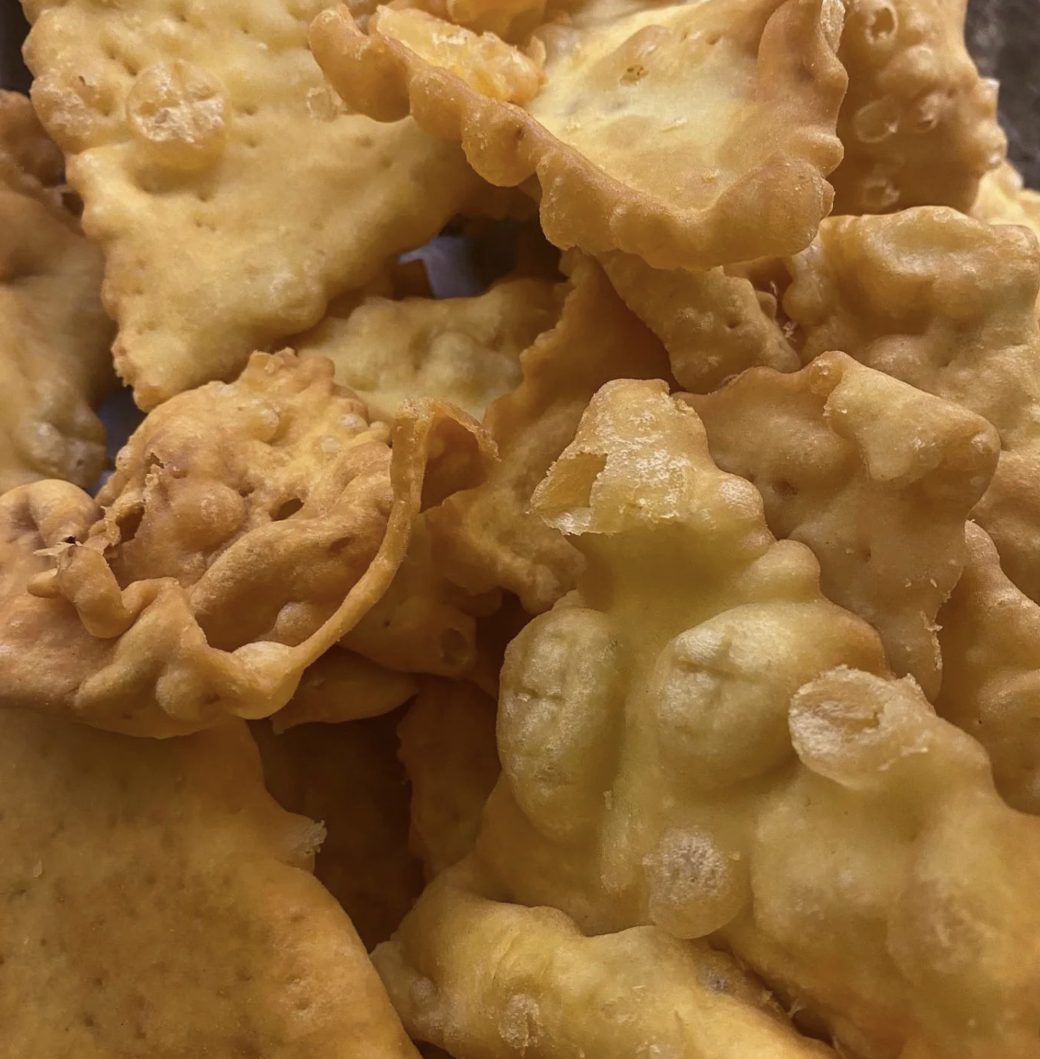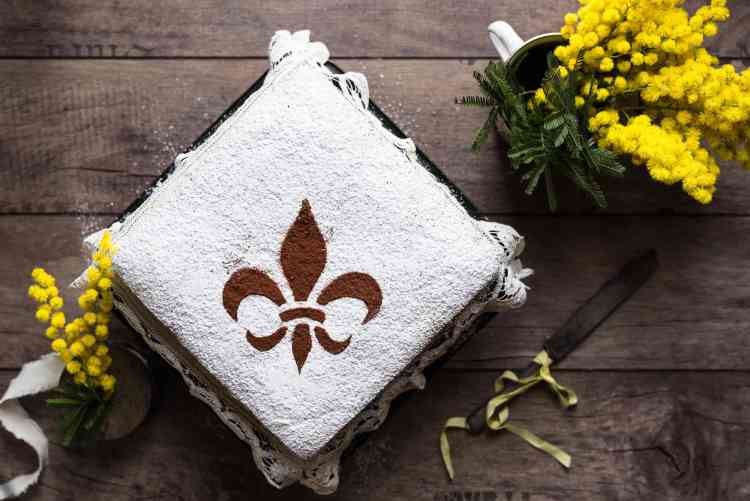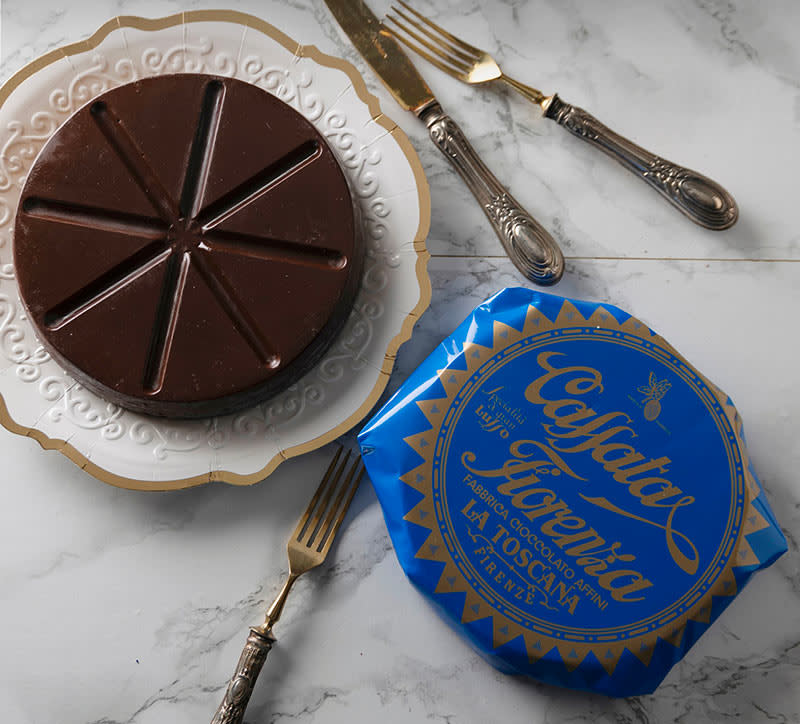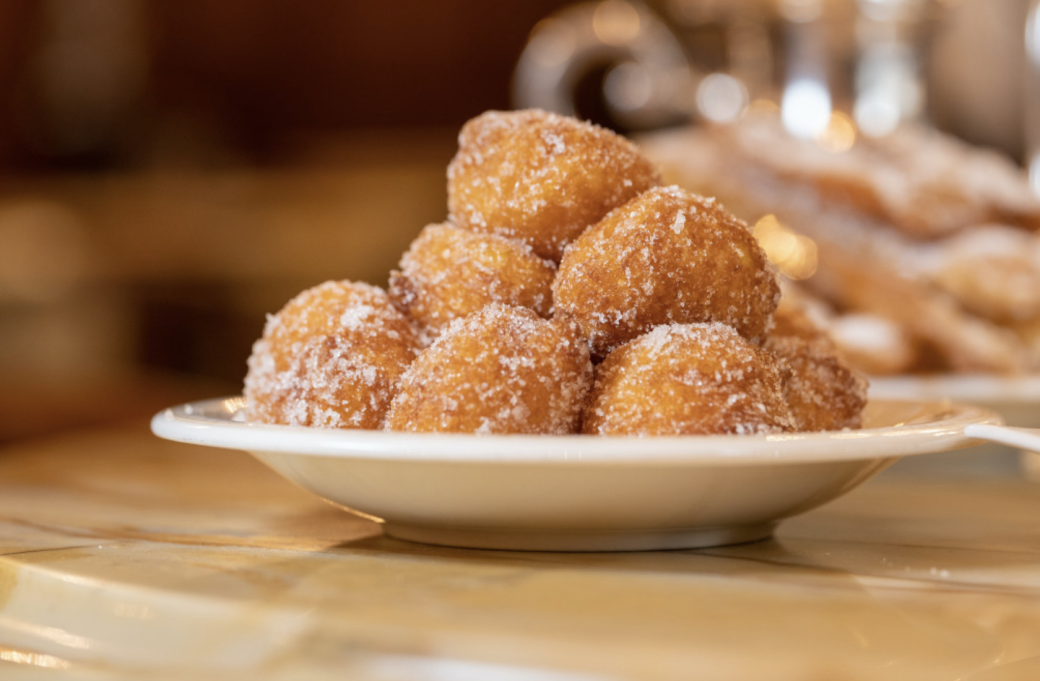All the typical desserts of Carnival in Tuscany
From schiacciata alla fiorentina to rice fritters, from cenci to berlingozzo: let's discover together the most popular traditional recipes
Carnival sweets in Tuscany, besides satisfying the palate, tell ancient stories and have their roots in the culinary traditions of the region. Carnival, with its colourful celebrations and abundance of sweet foods, has always represented a time of joy and celebration before the fasting period of Lent, the purification phase in view of Easter.
 Forno Becagli
Forno BecagliSo, cenci, frittelle, schiacciate alla fiorentina and berlingozzi have by now become part of the heritage of Tuscan carnival cuisine. Let's see together in detail which ones to absolutely taste.
Cenci
One of the most famous is undoubtedly cenci, rectangular strips of sweet dough fried and then sprinkled with icing sugar (you can also find the recipe here). This delicious dish dates back to ancient times and is a symbol of abundance and joy, so much so that it has been shared and appreciated in Tuscan families from generation to generation. The name cenci in Italian means rags or stropicciati and may derive from the irregular shape they take on during frying. They are also called frappe, chiacchiere and along the coast also donzelle or zonzelle.
 Cenci, Forno Pugi
Cenci, Forno PugiFrati
In Livorno they are a real institution and for those who are in the area it is worth popping into the Antica Friggitoria. These are doughnuts made of leavened dough fried in boiling oil and dipped in sugar; they are so called because their shape recalls the clerical habit of monks initiated into the priesthood.
Schiacciata alla Fiorentina
It needs no introduction. The schiacciata alla fiorentina is the queen of Carnival celebrations and in Florence there is no bakery or pastry shop that does not offer its version (you can find the best ones to taste here). It is a sweet focaccia, often decorated with the city's coat of arms and originally associated with the celebrations for the feast of San Giovanni, the patron saint of Florence. Over time it has conquered its place among Carnival sweets, maintaining its soft texture and characteristic citrus flavour. Its secret is a little lard in the dough added a little at a time. According to tradition, the rectangular shape depends on the fact that the nuns of Santa Verdiana used to prepare it in the same baking tins that they used to feed the prisoners.
 pasticceria stefania
pasticceria stefaniaCassata Fiorenza
Cassata Fiorenza is one of the most historic and iconic desserts of the Florentine twentieth century. Born right in Florence in 1936 (the year the recipe was patented) it immediately became a classic. Today only Fiore 1827 has the authorization to make this dessert. The taste is full: a thin layer of hazelnut fills the wafer, which is then covered in chocolate! Delicious, the dessert of Florence.
 Cassata Fiorenza
Cassata FiorenzaBerlingozzo
It is typical of Tuscany, more precisely of Lamporecchio. It is shaped like a doughnut, soft and citrus-flavoured. Perfect both at breakfast and snack time. It was already eaten at the time of the Medici, the name Berlingozzo derives from the Latin Berlingare, which means to feast at the table'. Some say that in the 15th century, during the Carnival period, this doughnut was worn around the neck, as a symbol of the last days of binge eating and fun before Lent.
Frittelle di Riso
A great classic to be enjoyed in all Tuscan cities from the end of January to 19 March, on Father's Day. They can be enjoyed in different variations (here are all the versions you can find in Tuscany), although the base is always rice cooked in milk together with citrus peel. In Florence they are filled with sultanas and pine nuts, cream, pistachios and even chocolate! In Piazza del Campo in Siena, there is never a shortage of the Savelli family's rice fritters. Crispy on the outside, soft on the inside, warm and orange-scented, they are the true queens of the Sienese Carnival. In Pistoia, sultanas return, but Vin Santo is preferred as a liqueur over the traditional marsala. Arezzo and Prato add orange peel to the Pistoia recipe, and the city of textiles prefers rum as a liqueur.
 Frittelle Gilli
Frittelle GilliCastagnole
A variation of fritters, which are shaped like balls the size of a chestnut. The recipe can be found in the book L'arte del mangiare bene by the Florentine Peregrino Artusi. Some recipes call for the addition of alkermes, a fundamental ingredient of the famous Prato peaches.
Zuccherini
They are the typical sweet of the Fucecchio Carnival. Their origin dates back to 1800 when peasant families prepared these sweet doughnuts for children with a dough similar to dry biscuits.








